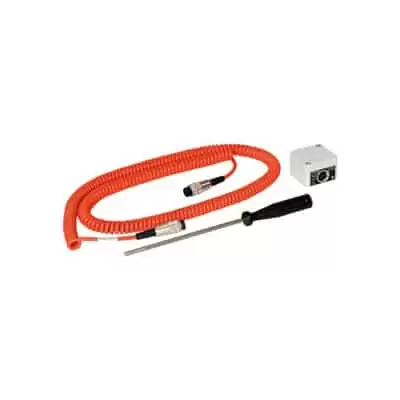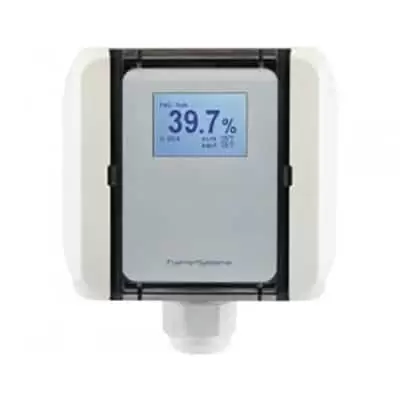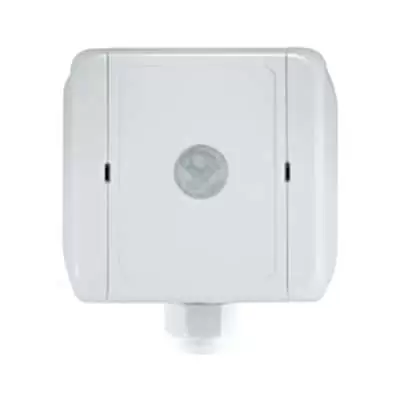Temperature sensor SM 850/1
The SM 850 series are temperature sensors for measuring in products. The sensor tip is made from stainless steel and is available in two models: with sharp or round tip. The sensor tip is suitable for use in liquid.
The sensor has a black plastic grip with a 3-pin DIN-connector for connecting the coiled lead.
The sensor is available in the following standard models:
SM 850 Sensor ø6mm and provided with a round point to prevent product damage. Length of the sensor is 170mm. As sensor element a Pt-100 3-wire is used according to DIN/IEC 751. The sensor can be used to measure e.g. the temperature between bananas etc. SM 8500 This sensor is identical to the SM 850, but has a Pt-1000 element in stead of a Pt-100.
SM 850/1 Sensor of ø 4mm and provided with a sharp point to pierce into the product. Length of the sensor tip is 150mm. As sensor element a Pt-100 3-wire is used according to DIN/IEC 751. The sensor can be used to measure the temperature in e.g. dough products. Please note: not suitable for frozen products!
SM 8500/1 This sensor is identical to the SM 850/1, but has a Pt-1000 element in stead of a Pt-100.
The sensors are supplied without coiled lead and connection box (type 502). These should be ordered separately. The standard, orange coiled lead is 1,5 meter long (stretched 6 meter). Other length and colours are available on request.
On request the sensors can be supplied with other length or measuring elements
- Type: SM 850
- Sensor meterial: rvs 304
- Insertion length: 170 mm
- Connection: 3-aderig
- Measure range: -50/+100°C
- Sensor: PT-100, 3-leider sensor, volgens DIN/IEC 751
- Type: Pt-100
- Number of wires: 3-leider
- Waterproof: nee






